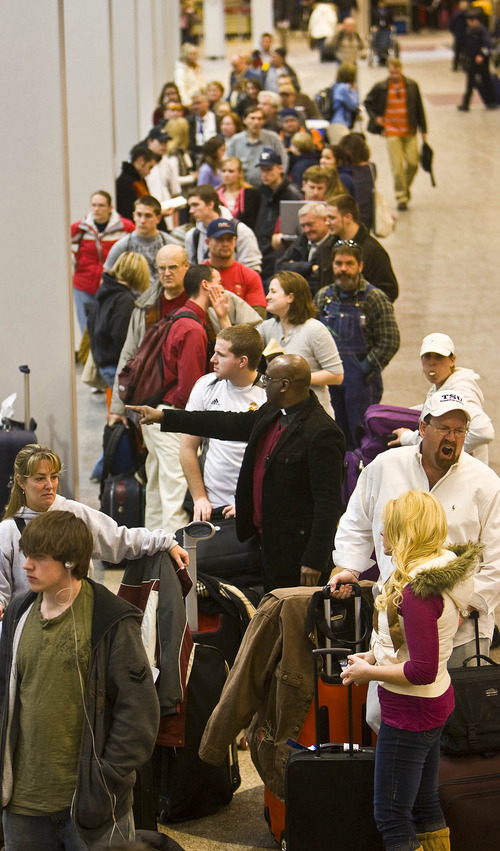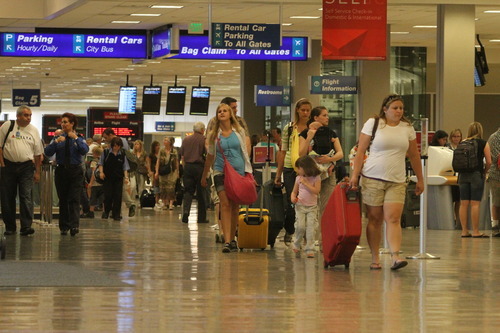This is an archived article that was published on sltrib.com in 2011, and information in the article may be outdated. It is provided only for personal research purposes and may not be reprinted.
Like other airports, the fortunes of Salt Lake City International Airport depend heavily on the whims of the airline business.
And like other airports, the years since 2000 for Utah's biggest airport have been a bumpy but not atypical ride, according to Bureau of Transportation figures.
"I wasn't surprised by any of the numbers ... it's what I would expect from a well-run airport," said William Fife, an airport consultant and former general manager of aviation planning for The Port Authority of New York and New Jersey.
Airport activity weakened in 2001 and 2002 in the wake of the 9/11 terrorist attacks and the recession that began two months later. Outbound passenger counts dipped in both years. Flights fell in 2001, as did available seat miles — an airline industry measure of passenger capacity.
Still, by present measures, the downturns were mild, and by 2003 operations at the airport had mostly recovered.
The next chapter opened in 2005, when passengers, seats and flights all spiked to record volumes. Driving the increase was Delta Air Lines' decision to shut its hub at Dallas-Fort Worth International Airport (DFW) and move much of the bustle to its Salt Lake City hub, said airport director Maureen Riley.
Utah's recovery from the 2001-2002 recession also fanned the upturn. By early 2004, the local economy was churning out new jobs and residential construction was booming, according to the Bureau of Economic and Business Research at the University of Utah.
The flurry at the airport subsided as Delta spread more DFW operations to other U.S. hubs, Riley said. Delta, Salt Lake City's dominant carrier, also filed for bankruptcy. Even so, the middle years of the decade were a period of stability.
That has changed. Crude oil, which had traded in a $20 to $30 per barrel range as recently as 2003, began to escalate in 2007. Late that year, crude passed $100 a barrel and was headed to a $147 high the following July.
To cope, Delta and other airlines removed seats, cut routes, moved to bigger planes and took other measures to improve productivity and ballooning crude prices that eroded their earnings.
High fuel costs, as well as the financial crisis, helped spark another recession late in 2007. The downturn officially ended in 2009, but recovery through 2010 was slow.
"In response to the downturn, Delta removed seat capacity, which translates into fewer planes and flight operations," Riley said.
Planes today are crowded and amenities that used to be free now come with a price that restored airline profits but alienated customers.
The ups and downs of the past decade were no different in Salt Lake City than at other major U.S. airports, Riley said.
"The trends of eliminating excess seat capacity and using larger equipment in pursuit of improved efficiency are global and affect airports everywhere," she said.
At the end of 2010, the airline industry was expecting 2011 to be a year of rebuilding. Since then, political upheaval in the Middle East has pushed up oil prices again. Delta and other airlines have tried to manage with fuel surcharges and higher fares, Fife said.
"There is a softness in the travel market," he said. "Some people are asking, 'Should I travel?' But the good news is business travel is starting to come back."
Through the first three months of this year, passenger counts at the airport were flat compared with the same period of 2010, according to airport figures.
pbeebe@sltrib.com Twitter: @sltribpaul





